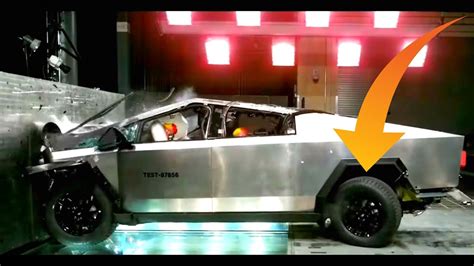In a recent incident that has left many questioning the safety mechanisms of Tesla’s much-anticipated Cybertruck, the vehicle unexpectedly accelerated into a home with its rear wheels locked. This shocking event has reignited debates around the quality of Tesla’s engineering and the implications of driver error. While some users on various platforms are quick to defend Tesla, others point to potential flaws in the vehicle’s design and operational mechanics. Let’s delve into these perspectives and evaluate what really transpired.
One of the most vocal criticisms comes from a user who highlighted that the rear wheels locked, leaving around 50 feet of skid marks, as the front axle continued to drag the Cybertruck forward. This raises legitimate questions about the vehicle’s engineering. Shouldn’t the front wheels, which typically handle more of the braking load, have arrested the motion of the vehicle? This anomaly suggests a potential flaw that cannot be easily dismissed as mere driver error. Additionally, another user pointed out that the rear brakes are far smaller than the front, which adds to the suspicion of a systemic issue in the braking mechanism.
It’s important to consider the technology behind electric vehicles (EVs), particularly Tesla’s regenerative braking system, which operates differently than traditional cars. As one commenter pointed out, regenerative braking mimics light brake application, which can be disorienting for drivers unfamiliar with the mechanism. In panic situations, it is entirely conceivable that a driver might inadvertently stomp on the accelerator, further complicating the situation. This points towards a need for better driver education or more intuitive system designs that can mitigate human error.
Another layer to this discussion is Tesla’s lack of a traditional PR department, which many believe exacerbates the confusion and misinformation surrounding incidents like these. As one user noted, the company’s non-committal response that ‘due to the terrain, the accelerator may or may not disengage when the brake is depressed’ does little to reassure the public. The absence of direct communication from Tesla allows speculation to fester, making it imperative for the company to adopt more transparent and proactive measures in addressing such serious allegations.
Contrary to some opinions suggesting driver error, another commenter pointed out the possibility of a software glitch as a contributing factor. Modern vehicles, especially those as advanced as the Cybertruck, rely heavily on intricate software systems to manage everything from braking to acceleration. If a software bug misinterprets inputs from the brake and accelerator, it could result in the kind of dangerous behavior witnessed here. This assertion is bolstered by historical instances where software glitches have caused unexpected vehicular behavior.
Lastly, the broader implications of this incident for the EV industry cannot be understated. If Tesla, a pioneer in electric vehicles, faces these kinds of challenges, it casts a long shadow over the entire sector. There is an urgent need for regulatory bodies to investigate and set stringent standards for EV safety features. Until then, it would be wise for both manufacturers and consumers to approach these innovations with a balance of enthusiasm and caution, understanding that every leap forward brings its own set of potential pitfalls.


Leave a Reply